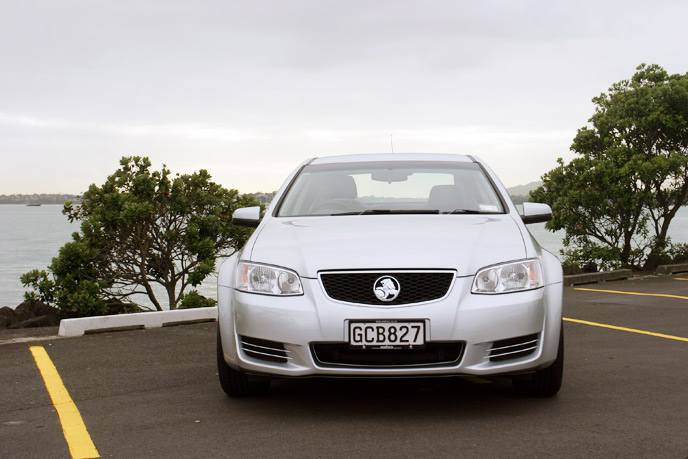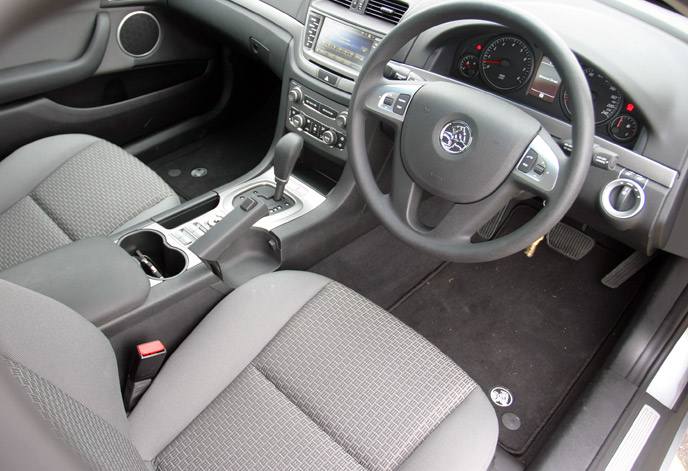Holden Commodore Omega Series II 2012 new car review
The Commodore Omega Series II keeps the segment competitive with improved fuel economy and an appealing feature set.

The Commodore Omega Series II keeps the segment competitive with improved fuel economy and an appealing feature set.
- Powerful and versatile
- Sensible price
- Excellent passenger comfort
- Some interior design looks a bit dated
- Heater didn’t work very well
- Feels heavy
On the road
The Omega sits in the comfort end of the Commodore range. You can expect easy cruising with a torquey 3-litre direct injection six-cylinder motor, a six-speed automatic gearbox and compliant tyres wrapped around 16-inch alloys.
There’s nothing sporty about the Omega, except that 10 years ago you would have found its 190kW and 290Nm of torque in top-of-the-line HSV models! This power, coupled with the Omega’s weight, gives you the ability to tow up to 1600kg on a braked trailer I had the Omega back-to-back with the Toyota Camry SX.
The Camry is a car that is a similar price and size, so the comparison was interesting. The Omega felt solid and heavier to drive. The accelerator, brake and steering all required more input than with the Camry. It made a much better engine noise with its 3-litre V6 compared to the Camry’s 4-cylinder 2.4-litre engine.
On fairly straight roads the Omega cruised along, relatively unflustered over uneven surfaces. When there are tighter corners to negotiate – for example, in the city – the heavier steering is noticeable, although not obstructive. The same goes for the brakes – the four-wheel discs (ventilated at the front) provided plenty of stopping power but there was a bit too much brake pedal travel followed by not quite enough assistance. Again, unless you are an absolute weakling this is just a case of getting used to it and by the end of the week, I was.
The usual safety features are present: electronic stability control (ESC), anti-lock brakes (ABS), electronic brakeforce distribution (EDB) and traction control system (TCS).
Fuel economy
Combined fuel economy is quoted at 8.9l/100km, which is a figure we almost matched in our test. Obviously, with a 3-litre V6 you’ll be using more than a four-pot. However, the new engine in the Omega is significantly more frugal than my personal car (which has a 2.7-litre V6) – somewhere around 30-40%.
Inside and out
Being the base model of the range the interior is a little bland and inoffensive with a sea of grey plastic, some light grey fabric seats and a steering wheel with buttons to control the audio and Bluetooth phone integration.
In-car entertainment is also controlled through a large touch screen in the centre of the dashboard. This screen also displays the optional reversing camera image and the optional integrated satellite navigation map, the two of which bump the price up to around the same as the Camry SX.
There is dual climate control for the front seat occupants, however, the heater was very average and when sitting stationary seemed to cool down rather than stay the same temperature. This might be a fault on this particular car as it’s an unusual problem.
Rear seat passengers are treated to plenty of legroom. You will see in the photos that my seating position, despite being six foot, left a good deal of space for the passenger behind me. Overall the Commodore’s ride was comparable with the Camry’s, though it did feel a lot heavier at the front.
Verdict
If you’re doing a straight comparison between the Toyota and the Holden, the Holden looks the better deal in terms of features, although they do boost the price by $4000. Fleet drivers will appreciate the muscular looks, the easy reversing camera (and reversing sensors), integrated satellite navigation and the compliant ride. Families will appreciate the passenger comfort levels and towing ability.
Image gallery
Also consider





